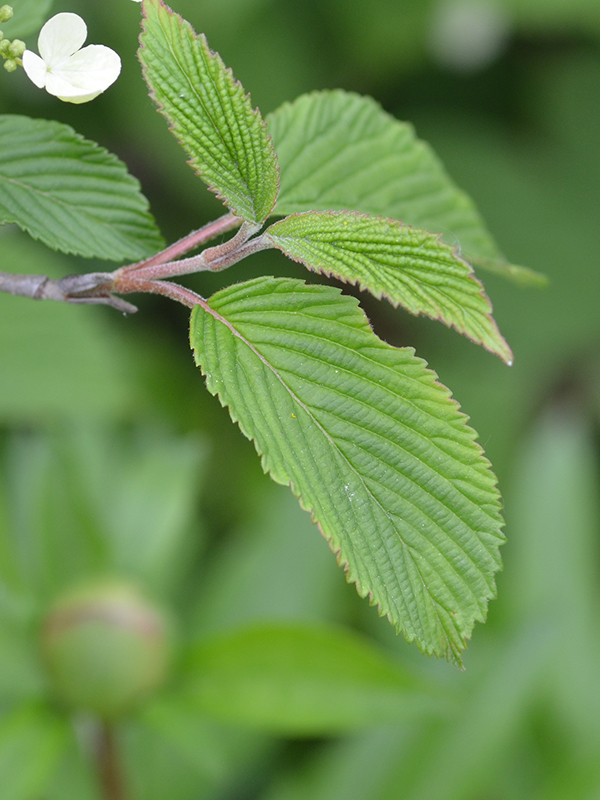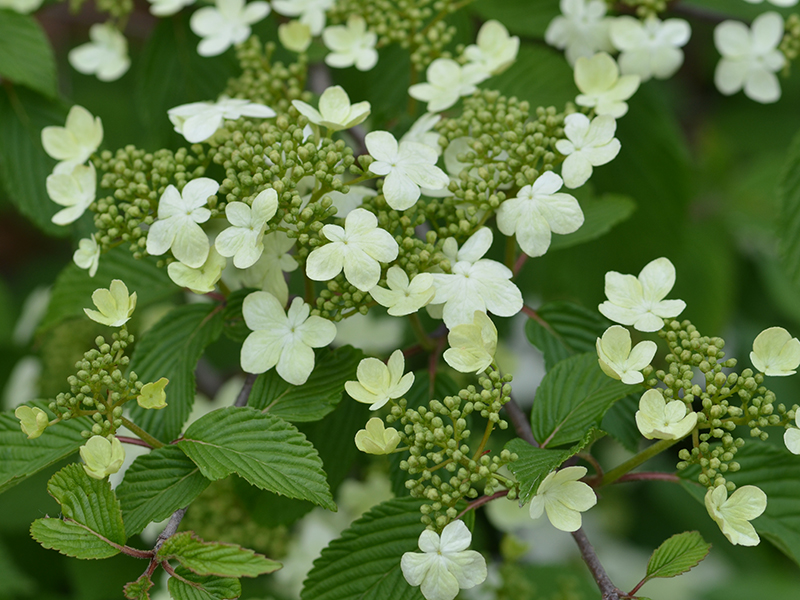| Shape | Rounded form. |
| Landscape | Works well both as a specimen and in groups, or as an addition to a shrub or flower border. |
| Propagation | Propagate through softwood cuttings, hardwood cuttings, grafting and layering.
|
| Cultivation | Grow in full sun or partial shade in any moderately fertile, rich, well-drained soil. |
| Pests | Aphids, whitefly, leaf spot and honey fungus. |
| Notable Specimens | The Toronto Botanical Garden, Toronto, Ontario, Canada. Royal Botanical Gardens, Burlington, Ontario, Canada. |
| Habitat | Horticultural origin. |
| Leaf Description | Leaves are dark green, ovate to ovate-oblong, growing to 6.5 cm long, turning burgundy purple to red in autumn. |
| Flower Description | Flowers are sweetly fragrant and white, appearing in hemispherical clusters in spring that are attractive to butterflies. |
| Fruit Description | Fruit is a berry-like drupe that ripens from red to black. |

